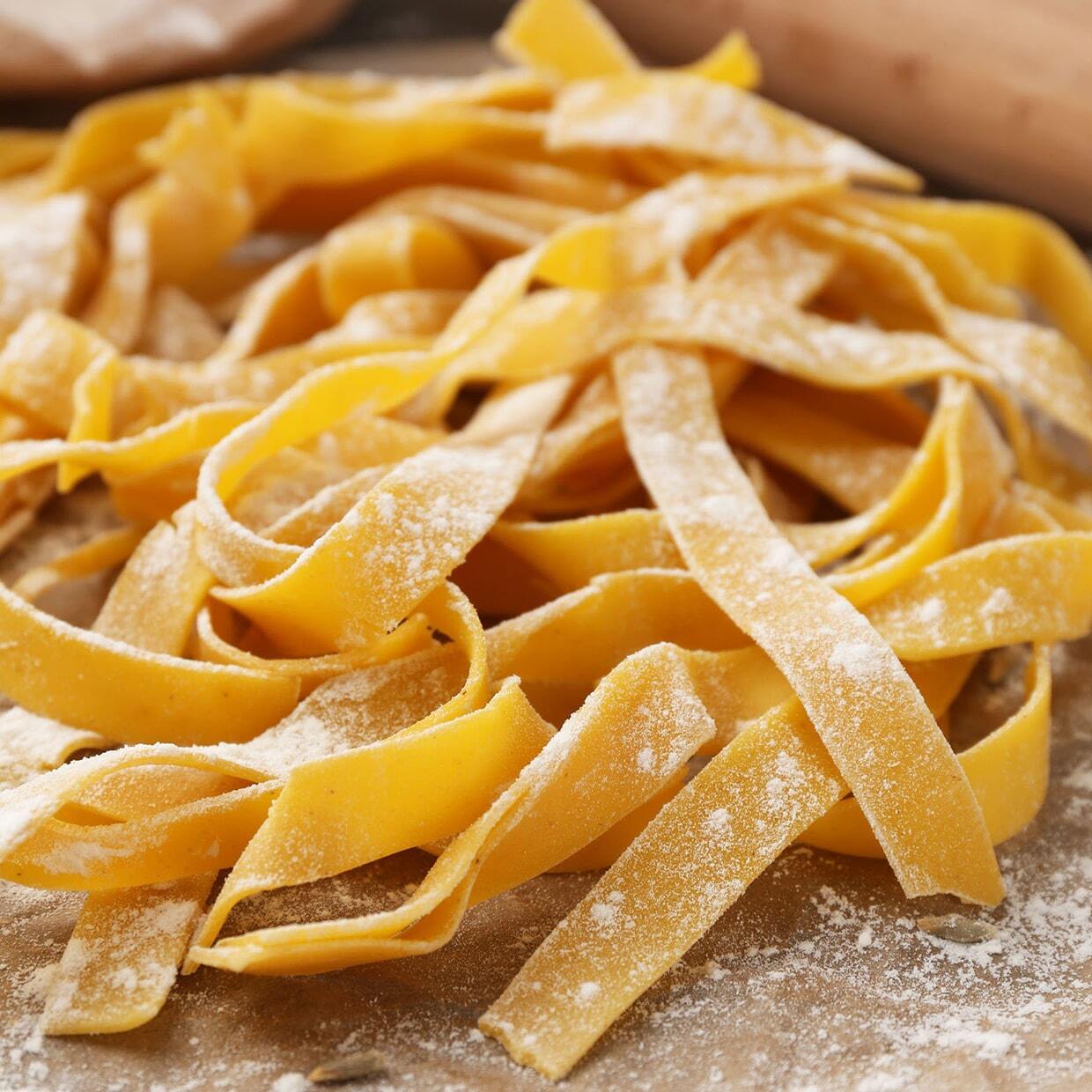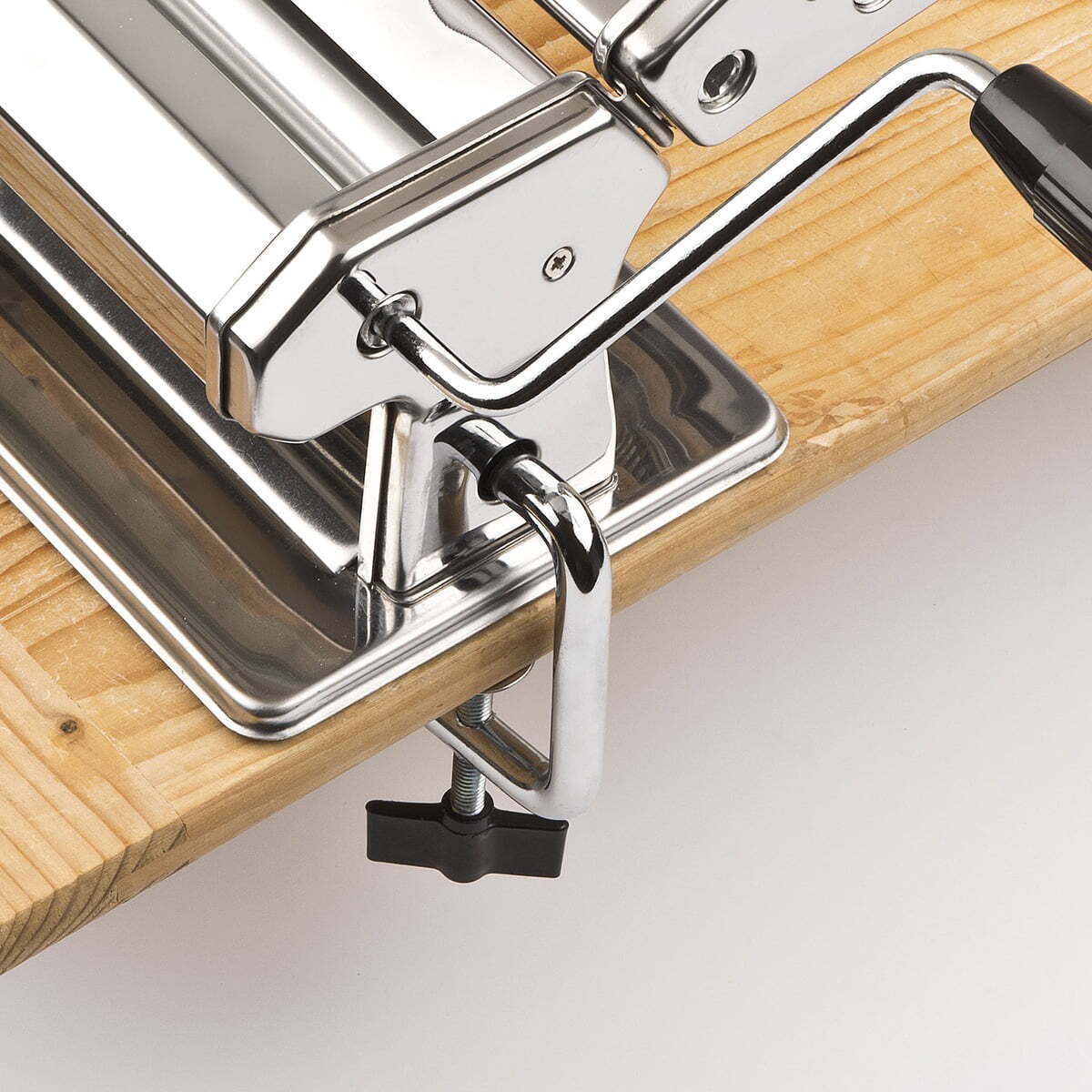Emilian puff pastry, who said it can't be made with a machine?
When we talk about traditional Emilian egg pasta</strong, most recipes immediately ban mixers and pasta machines, but in this article we want to go against the current: without taking anything away from the Emilian pasta makers who have skillfully rolled out the pasta by hand for generations, we want to reveal that with a well-made dough, you can also achieve a perfect egg pasta using a small but great help, the pasta machine.
On the other hand, those who have had the fortune of seeing a grandmother making pasta at home may have noticed than even the most faithful to traditional cooking sometimes resort to a pasta machine, especially when the amount of pasta to prepare is demanding. Just think about the ritual of preparing tortellini or cappelletti for the holidays, an undertaking that involves many family members, who gather for the occasion to prepare several kilos of filled pasta to be divided later for the traditional lunch.
In situations like this the pasta machine becomes a key ally to make the artisanal ""assembly line"" quick and efficient. So, if the professional pasta makers use it, why shouldn't we also use it to make pasta at home?
Let's discover then what is the secret of a good Emilian dough , starting from the ingredients: only one egg for every 100 grams of 00 flour. That's right, all you need are two simple ingredients to make egg pasta, so what makes the difference is something else namely the dough and the rolling out of the dough.

The dough for handmade pasta
After placing the flour in a well on the cutting board, a crater is created on the top where the eggs will be broken. You start mixing from the center with a fork, gradually pulling in all the flour into the dough and working it until it is homogeneous at the right point. Once the two ingredients are mixed, before starting to work the dough with your hands, it is good to scrape the cutting board to remove any residue of dough and wash your hands.
After sprinkling a thin layer of flour, start working the dough by folding it repeatedly on itself with the palm of the hand and wrist push, always in the same direction, rotating the dough by 15° after each press. This process should last at least 15 minutes, but the duration also depends on the skill of the person kneading. The final result should be a smooth and elastic dough. This is the traditional method, but if you are in a hurry, you can also get excellent results with an electric mixer, which saves time and effort.
At this point, the dough must rest for at least 30 minutes: shape it into a circular loaf and place it in a plastic bag or wrap it in plastic wrap to prevent it from drying out, letting it swell until it becomes softer and more elastic.

How to roll out Emilian egg pasta dough
At this point the dough is ready to be rolled out. Divide it into smaller portions and take one at a time, keeping the others covered with plastic wrap. Sprinkle flour on the cutting board and start to roll out the first dough ball with a rolling pin to turn it into a disk.
Now you have two options: rolling out the dough by hand with a rolling pin from the center towards the edges, rotating it continuously until it becomes a very thin disk, or letting yourself be helped by a pasta machine. This handy kitchen tool will allow you to achieve the desired thickness much faster and with less effort.
The manual pasta sheeter
he most traditional version is the sfogliatrice manual pasta maker with a crank, such as the IM90 Girmi's pasta machine, is made of a stainless steel body with 15 cm aluminum rollers. There are nine different roller settings to gradually thin the pasta until reaching a very thin thickness. Using the machine is very simple, just attach it to the table with the clamping clamp and adjust the rollers. This tool is truly an evergreen that has helped generations of people make pasta at home with ease. Its robustness makes it an accessory that lasts a long time, just like those seen in our grandmothers' kitchens.
The Girmi manual pasta sheeter is also equipped with shaped rollers to cut the dough into three different pasta shapes: tagliatelle, lasagna, and tagliolini. But the egg-based pasta recipes you can prepare with a thin sheet like this are many more. Get creative with filled pastas like ravioli, tortelloni, tagliolini, and cannelloni; use the dough for maccheroni al pettine and use the scraps to make maltagliati or squares for your soups and broths.
The electric sheeter
If you want to be even faster in preparing and save yourself the effort of turning the crank, you can opt for the IM91 pasta machine from Girmi, equipped with a practical Two-speed motor of operation. With the pulse function, this automatic pasta maker cuts preparation times in half. Equipped with two interchangeable accessories, it allows you to prepare up to five types of pasta: lasagna, tagliatelle, spaghetti, reginette, and fettuccine.
Now that we have debunked the myth that Emilian pasta dough must be strictly hand-rolled, you have no more excuses to postpone: try making pasta at home and you will see how easy it is to tackle the great dishes of traditional cuisine.